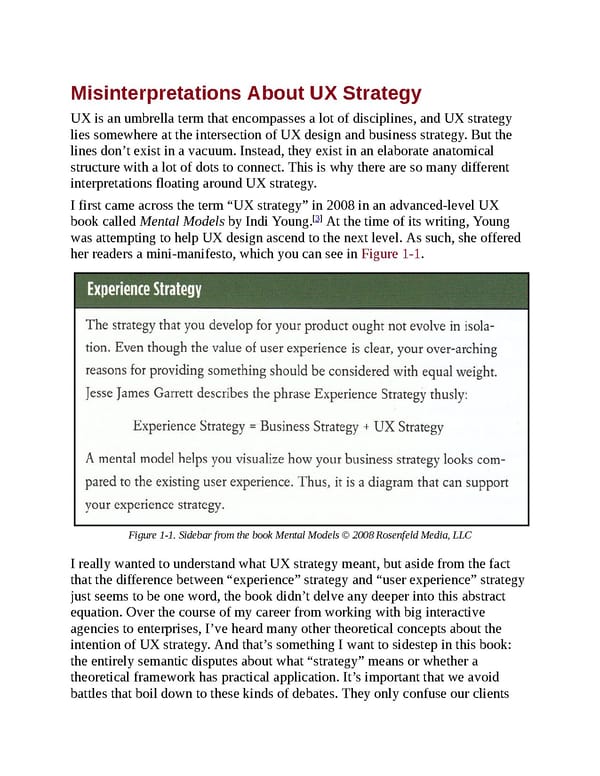Misinterpretations About UX Strategy UX is an umbrella term that encompasses a lot of disciplines, and UX strategy lies somewhere at the intersection of UX design and business strategy. But the lines don’t exist in a vacuum. Instead, they exist in an elaborate anatomical structure with a lot of dots to connect. This is why there are so many different interpretations floating around UX strategy. I first came across the term “UX strategy” in 2008 in an advanced-level UX [3] book called Mental Models by Indi Young. At the time of its writing, Young was attempting to help UX design ascend to the next level. As such, she offered her readers a mini-manifesto, which you can see in Figure 1-1. Figure 1-1. Sidebar from the book Mental Models © 2008 Rosenfeld Media, LLC I really wanted to understand what UX strategy meant, but aside from the fact that the difference between “experience” strategy and “user experience” strategy just seems to be one word, the book didn’t delve any deeper into this abstract equation. Over the course of my career from working with big interactive agencies to enterprises, I’ve heard many other theoretical concepts about the intention of UX strategy. And that’s something I want to sidestep in this book: the entirely semantic disputes about what “strategy” means or whether a theoretical framework has practical application. It’s important that we avoid battles that boil down to these kinds of debates. They only confuse our clients
 UX Strategy: How to Devise Innovative Digital Products that People Want Page 15 Page 17
UX Strategy: How to Devise Innovative Digital Products that People Want Page 15 Page 17